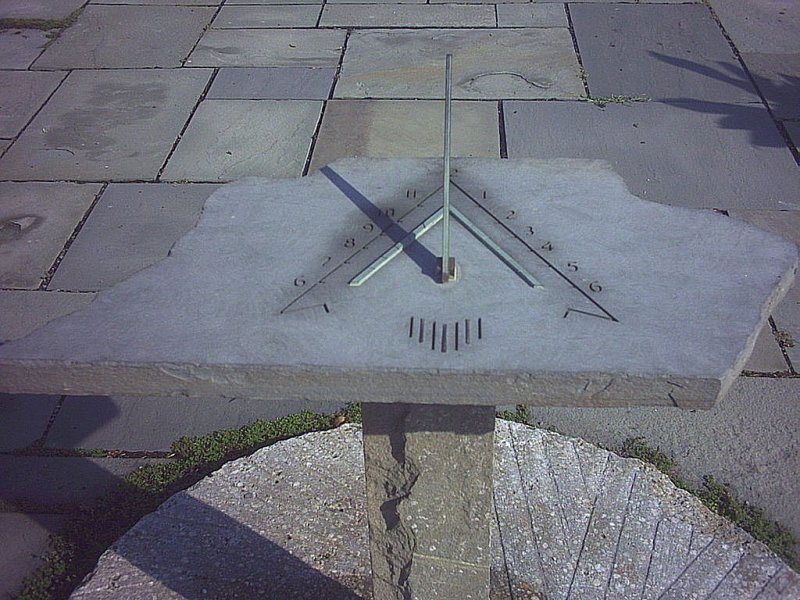Gnomon: Ancient Time Measuring Instrument Used By Babylonians, Egyptians And Chinese
A. Sutherland - AncientPages.com - A gnomon ("one that knows or examines") is the part of a sundial that casts a shadow.
The term has been used for many different purposes in mathematics, astronomy, and other fields. In the distant past, this vertical stick was called 'shadow stick,' but today, it is known as 'gnomon.'
A simple astronomic instrument, the 'gnomon' used to calculate the time, season, and so on) is composed of a vertical gnomon and a horizontal ruler. Image: Cultural China
It was probably the first device for indicating the time of day, dating from about 3500 BC. The length of the shadow this simple instrument cast gave an indication of the time of day.
Gnomon was known in Inca's Peru, megalithic Europe. In ancient China, the gnomon was a valuable instrument for astronomical observations throughout the centuries of Chinese civilization.
The instrument is mentioned in the 2nd-century' Nine Chapters on the Mathematical Art' as being used much earlier by the Duke of Zhou (11th century BC).
Pre-Socratic Greek philosopher Anaximander (610-546 BC) introduced the instrument to the Greeks. Greek mathematician (geometer) and astronomer, Oenopides (lived ca 450 BC) used the phrase drawn gnomon-wise to describe a line drawn vertically to another.
Garden sundial at 9:30am in the Robison Herb Garden, part of the F. R. Newman Arboretum at the Cornell University Plantations. Image credit: Gesslein - Public Domain
Hero of Alexandria defined the gnomon as a figure, when added to another figure, formed a similar figure to the original.
By the 8th century BC, more precise devices were in use.
At midday, the shadow of a stick is the shortest. This alignment was used by the civilizations of Mesopotamia, Egypt, and China as the North-South direction.
According to Egypt's hieroglyphic texts, an instrument was an L-shaped object with a short vertical arm and a long graduated horizontal arm, called 'setchat or merkhet' (device of knowledge.
Today, a three-dimensional gnomon is commonly used in CAD and computer graphics to aid in positioning objects in the virtual world.
Written by – A. Sutherland - AncientPages.com Senior Staff Writer
Updated on January 9, 2023
Copyright © AncientPages.com All rights reserved. This material may not be published, broadcast, rewritten or redistributed in whole or part without the express written permission of AncientPages.com
Expand for referencesMore From Ancient Pages
-
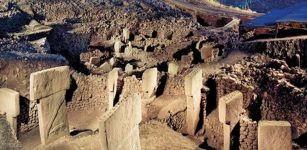 Hidden Geometric Patterns Found At Göbeklitepe – The Site Of World’s First Temple
Archaeology | May 1, 2020
Hidden Geometric Patterns Found At Göbeklitepe – The Site Of World’s First Temple
Archaeology | May 1, 2020 -
 Unexplained Mystery Of The Dangerous Invisible Enemy In A French Town
Featured Stories | Feb 25, 2024
Unexplained Mystery Of The Dangerous Invisible Enemy In A French Town
Featured Stories | Feb 25, 2024 -
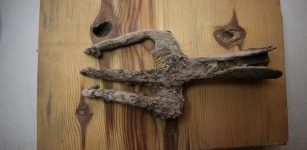 1700-Year-Old Iron Trident Found In The Ancient City Of Assos, Turkey
Archaeology | Nov 1, 2023
1700-Year-Old Iron Trident Found In The Ancient City Of Assos, Turkey
Archaeology | Nov 1, 2023 -
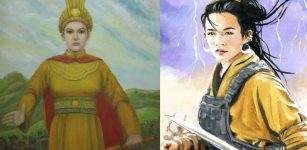 Lady Trieu: Fierce Warrior, Rebel, Freedom Fighter And National Hero In Vietnam
Featured Stories | Feb 26, 2019
Lady Trieu: Fierce Warrior, Rebel, Freedom Fighter And National Hero In Vietnam
Featured Stories | Feb 26, 2019 -
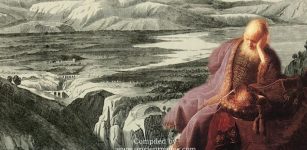 Tahpanhes – Biblical City Where Prophet Jeremiah And King Zedekiah’s Daughters Hid From The Babylonians
Biblical Mysteries | Jul 19, 2021
Tahpanhes – Biblical City Where Prophet Jeremiah And King Zedekiah’s Daughters Hid From The Babylonians
Biblical Mysteries | Jul 19, 2021 -
 Ancient Desert Mystery – Did Thousands Vanish Without A Trace Because Of An Ominous Prophecy And Revenge?
Featured Stories | Nov 28, 2022
Ancient Desert Mystery – Did Thousands Vanish Without A Trace Because Of An Ominous Prophecy And Revenge?
Featured Stories | Nov 28, 2022 -
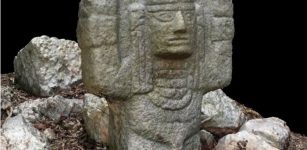 Ancient Atlantean Sculpture Discovered At The Mayan Chichen Itza Archaeological Site
Archaeology | Aug 29, 2023
Ancient Atlantean Sculpture Discovered At The Mayan Chichen Itza Archaeological Site
Archaeology | Aug 29, 2023 -
 Ancient People In Peru Had A Unique Response To The Looting And Destruction Of Their Ancestors’ Graves
Archaeology | Feb 3, 2022
Ancient People In Peru Had A Unique Response To The Looting And Destruction Of Their Ancestors’ Graves
Archaeology | Feb 3, 2022 -
 Humans Were Living Around Fort McMurray, Alberta 13,000 Years Ago – Scientists Reveal
Archaeology | Aug 3, 2022
Humans Were Living Around Fort McMurray, Alberta 13,000 Years Ago – Scientists Reveal
Archaeology | Aug 3, 2022 -
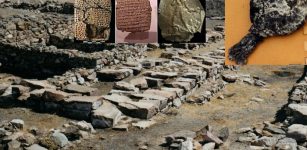 Statuettes Of Gods And Goddesses Unearthed At Ancient Site Of Kültepe
Archaeology | Sep 16, 2020
Statuettes Of Gods And Goddesses Unearthed At Ancient Site Of Kültepe
Archaeology | Sep 16, 2020 -
 On This Day In History: Michael Servetus Burned At The Stake ‘Atop A Pyre Of His Own Books’ – On Oct 27, 1553
News | Oct 26, 2016
On This Day In History: Michael Servetus Burned At The Stake ‘Atop A Pyre Of His Own Books’ – On Oct 27, 1553
News | Oct 26, 2016 -
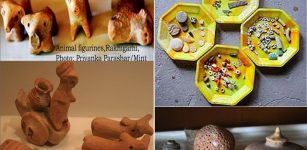 Early Harappan Cultures Can Solve Mysteries Of Several Lost Cities Of Indus Valley Civilization
Artifacts | May 30, 2019
Early Harappan Cultures Can Solve Mysteries Of Several Lost Cities Of Indus Valley Civilization
Artifacts | May 30, 2019 -
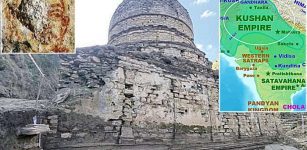 2,000-Year-Old Buddhist Complex Unearthed In Northern Swat, Pakistan
Archaeology | Feb 20, 2021
2,000-Year-Old Buddhist Complex Unearthed In Northern Swat, Pakistan
Archaeology | Feb 20, 2021 -
 On This Day In History: Japanese Raid On The United States Navy At Pearl Harbor – On Dec 7, 1941
News | Dec 7, 2016
On This Day In History: Japanese Raid On The United States Navy At Pearl Harbor – On Dec 7, 1941
News | Dec 7, 2016 -
 Wreckage From Famous Warships Explored In 3D On Anniversary Of Sinking
Archaeology | Nov 22, 2022
Wreckage From Famous Warships Explored In 3D On Anniversary Of Sinking
Archaeology | Nov 22, 2022 -
 Draken Harald Hårfagre – World’s Largest Viking Ship On Its Way To U.S And Canada
News | Apr 27, 2016
Draken Harald Hårfagre – World’s Largest Viking Ship On Its Way To U.S And Canada
News | Apr 27, 2016 -
 On This Day In History: Henry IV Is Crowned King Of France – On Feb 27, 1595
News | Feb 27, 2017
On This Day In History: Henry IV Is Crowned King Of France – On Feb 27, 1595
News | Feb 27, 2017 -
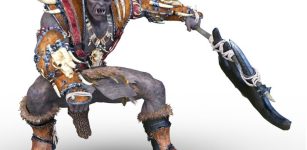 Fomorians In Irish Myths And Legends: Race Of Demonic Giants Who Inhabited Ireland And Scotland
Celtic Mythology | May 20, 2017
Fomorians In Irish Myths And Legends: Race Of Demonic Giants Who Inhabited Ireland And Scotland
Celtic Mythology | May 20, 2017 -
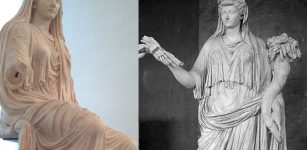 World’s First Diva Was Livia – Wife Of Emperor Augustus
Ancient History Facts | Aug 2, 2016
World’s First Diva Was Livia – Wife Of Emperor Augustus
Ancient History Facts | Aug 2, 2016 -
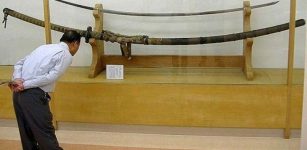 The Norimitsu Odachi – Giant Japanese Sword Remains An Enigma
Artifacts | Mar 22, 2019
The Norimitsu Odachi – Giant Japanese Sword Remains An Enigma
Artifacts | Mar 22, 2019


